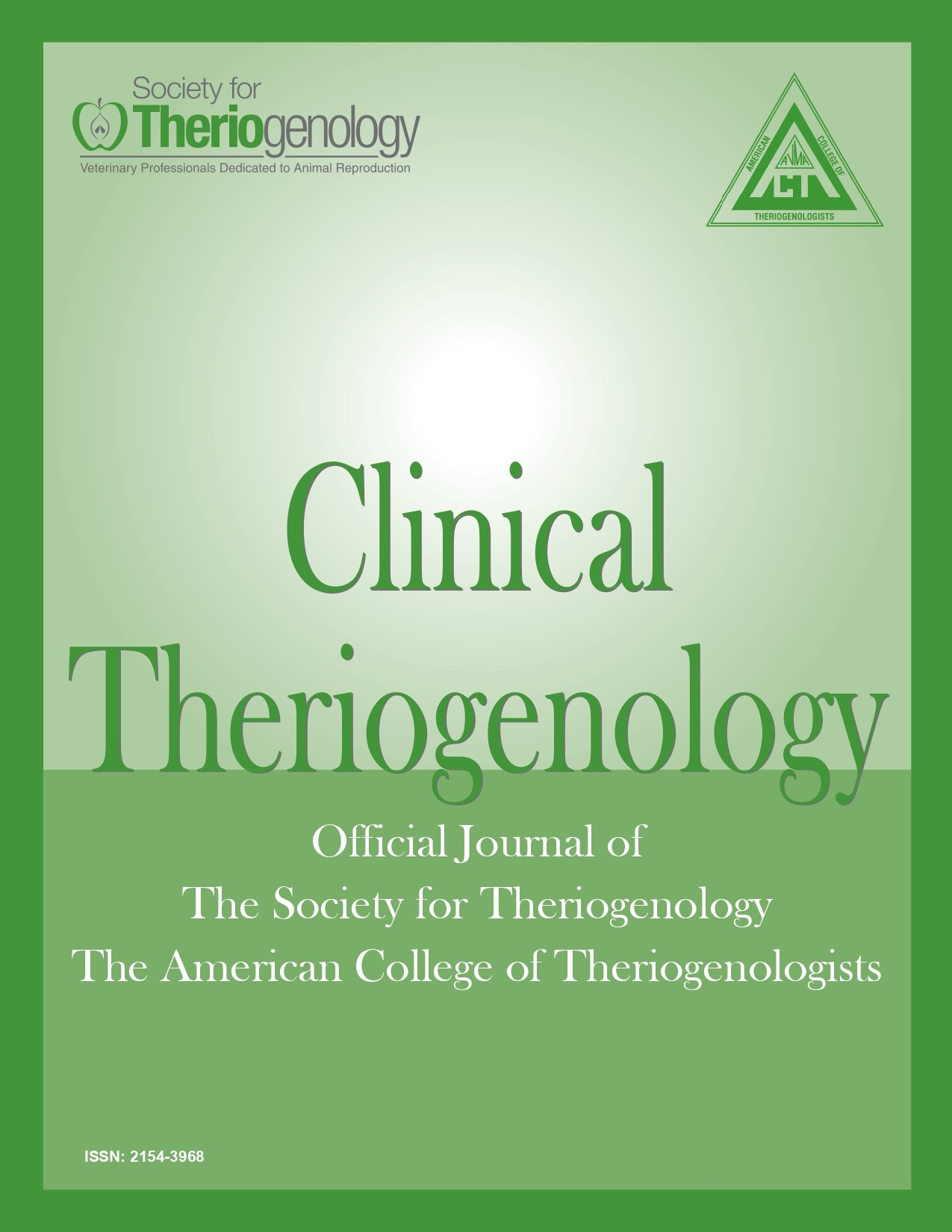Anti Müllerian hormone concentrations and antral follicle number in dairy and beef heifers subjected to a modified 5 day CoSynch + CIDR protocol
Abstract
Anti Müllerian hormone (AMH) concentration is associated with ovarian antral follicle count (AFC) and ovulatory response and is a potential biomarker for ovarian status of replacement heifers.1,2 However, only a few studies have compared AMH concentrations and AFC between beef and dairy heifers, under commercial management conditions. The objective was to compare AMH concentration and AFC between dairy and beef heifers subjected to 5 day CoSynch + CIDR protocol and to evaluate the possible association between AMH and AFC with pregnancy rate to fixed time artificial insemination (FTAT). We hypothesized that beef and dairy yearling heifers have comparable AMH concentrations and AFC at the time of enrolment in the breeding program and that there is no association between AMH concentration and AFC at the time of CIDR insertion and FTAT. A total of 80 Holstein and 94 Angus 1 year old heifers received an intravaginal CIDR containing 1.38 g of progesterone for 5 days. At CIDR removal, 25 mg of PGF2± was given IM and 72 hours after CIDR removal, 100 μg of GnRH was given IM and heifers were artificially inseminated with frozen-thawed semen. Immediately before CIDR insertion, heifers were evaluated by transrectal ultrasonography (TRUS) to determine reproductive tract score and AFC (> 3 mm). Blood samples were concurrently collected for determination of AMH concentration using a commercial ELISA (Anshlabs®, Webster, TX). Pregnancy diagnosis was performed by TRUS 32 days after FTAT. Data were analyzed using Stata® (StataCorp LLC, Version 15.1). Concentrations of AMH and AFC were compared between groups using a two-sample Student’s t test. Logistic regression and Chi-square were used to determine if there was an association between AMH concentration, AFC and FTAI. Beef heifers had higher (p < 0.0001) AMH concentrations than dairy heifers (387.44 ± 41.5 versus 178.20 ± 22.0 pg/ml, respectively). However, AFC was not different between beef and dairy heifers (5.02 ± 0.25 versus 5.81 ± 0.3 follicles). Based on logistic regression analysis, AMH concentrations and AFC at initiation of the protocol did not influence FTAT either in dairy (52.5%) or in beef (39.3%) heifers (p > 0.05). In conclusion, beef heifers had significantly higher AMH concentrations than dairy heifers, but AFC did not differ. Further studies are necessary to evaluate AHM concentration as a potential biomarker to assess heifer reproductive status before initiating a synchronization protocol.
Downloads

This work is licensed under a Creative Commons Attribution-NonCommercial 4.0 International License.
Authors retain copyright of their work, with first publication rights granted to Clinical Theriogenology. Read more about copyright and licensing here.





